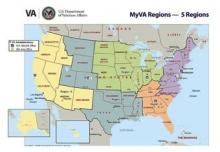On January 26, 2015, Secretary of Veterans Affairs Robert A. McDonald revealed a plan to restructure the 21 VISNs to better align services for veterans. So what exactly will that entail? For starters, many VISN boundaries will need to be redrawn, but the VISNs are not going away any time soon. Instead, organizations and services within the VA will begin work to ensure their structures are aligned with the 5-region framework by the end of June 2015.
“The regions are going to play an increasingly important role for leadership in VHA and VA in general, but the VISNs will continue to exist,” Acting Director of VHA Health Systems Communications John Goodrich told Federal Practitioner.
Secretary McDonald’s announcement came almost 3 months after he shared preliminary plans to restructure the VA. The initiative, known as MyVA, seeks to ensure that veterans have a clear understanding of VA services and simplifies and streamlines the process of accessing those services. MyVA empowers employees with the authority, knowledge, and tools they need to solve veterans’ problems and take action. The regional structure also will help to ensure that products and services VA delivers to veterans are integrated within the organization.
The 5-regions alignment will allow VA to begin the process of integrating disparate organizational boundaries into a single regional framework to enhance internal coordination, a problem VA has admitted publicly since the initial wait time scandal was brought to the public’s attention last spring.Related: Maintaining the Public Trust
“We want every veteran to have a seamless, integrated, and responsive VA customer service experience every time. This regional alignment is the first step in empowering veterans to interact with one VA—MyVA,” said Secretary McDonald. “Ultimately, this reform will improve the veteran experience by enabling veterans to more easily navigate VA and access their earned care and benefits.”
Veterans Service Organizations were invited to attend the January 26 briefing. “Paralyzed Veterans of America will remain focused on being the lead voice for veterans with the greatest needs as we monitor the ongoing impact of these MyVA initiatives,” Paralyzed Veterans of America Executive Director Homer Townsend responded.
This isn’t the first time VA has reorganized. The VISN structure was implemented only in 1995 under then Under Secretary for Health Kenneth W. Kizer, MD, MPH. Dr. Kizer’s goal, as stated in his March 17, 1995, Vision for Change, was to “transform [VHA] to a more efficient and patient-centered health care system.” In 2002, VISNs 13 and 14 were joined to form VISN 23.
Related: 2015 Directory of VA and DoD Facilities
The 2015 restructuring is just 1 of 4 goals Secretary McDonald seeks to achieve through the MyVA initiative. Others include establishing a VA-wide customer service organization, working with partners to establish a national network of Community Veteran Advisory Councils, and identifying opportunities for VA to realign its internal business processes into a shared services model.
More information is expected in the coming weeks.

